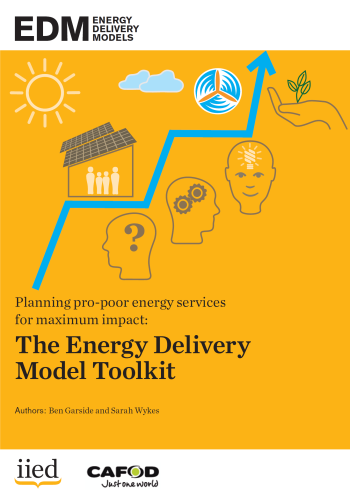The Energy Delivery Model (EDM) project is a collaboration between CAFOD and IIED, aiming to build understanding of the enabling factors and barriers to delivering energy services for poor groups, learning from practitioner experience and research.
A case study is then used to describe how the EDM approach was tested on the ground in Indonesia, in collaboration with two local partners, the Institute for Essential Services Reform (IESR) and the Indigenous Peoples Alliance of the Archipelago (AMAN), and a community living in a remote part of Flores Island in East-Nusa Tenggara (NTT) Province. NTT Province was chosen because it has the highest levels of energy poverty in Indonesia, and because the region is being targeted by national and local government as a priority area for accelerating energy access. The EDM design process in Indonesia led to the further development of the ‘Energy Delivery Model Toolkit’. This consists of a six-step participatory design process supported by two innovative tools (the Delivery Model Map and Canvas). The toolkit can be used by project/service developers and end users not only to design new energy services but also to review existing projects/services and to inform more effective design of future energy services.

